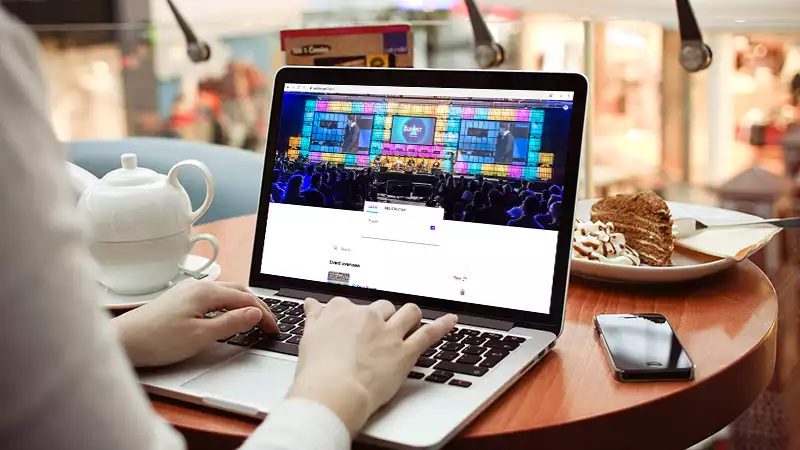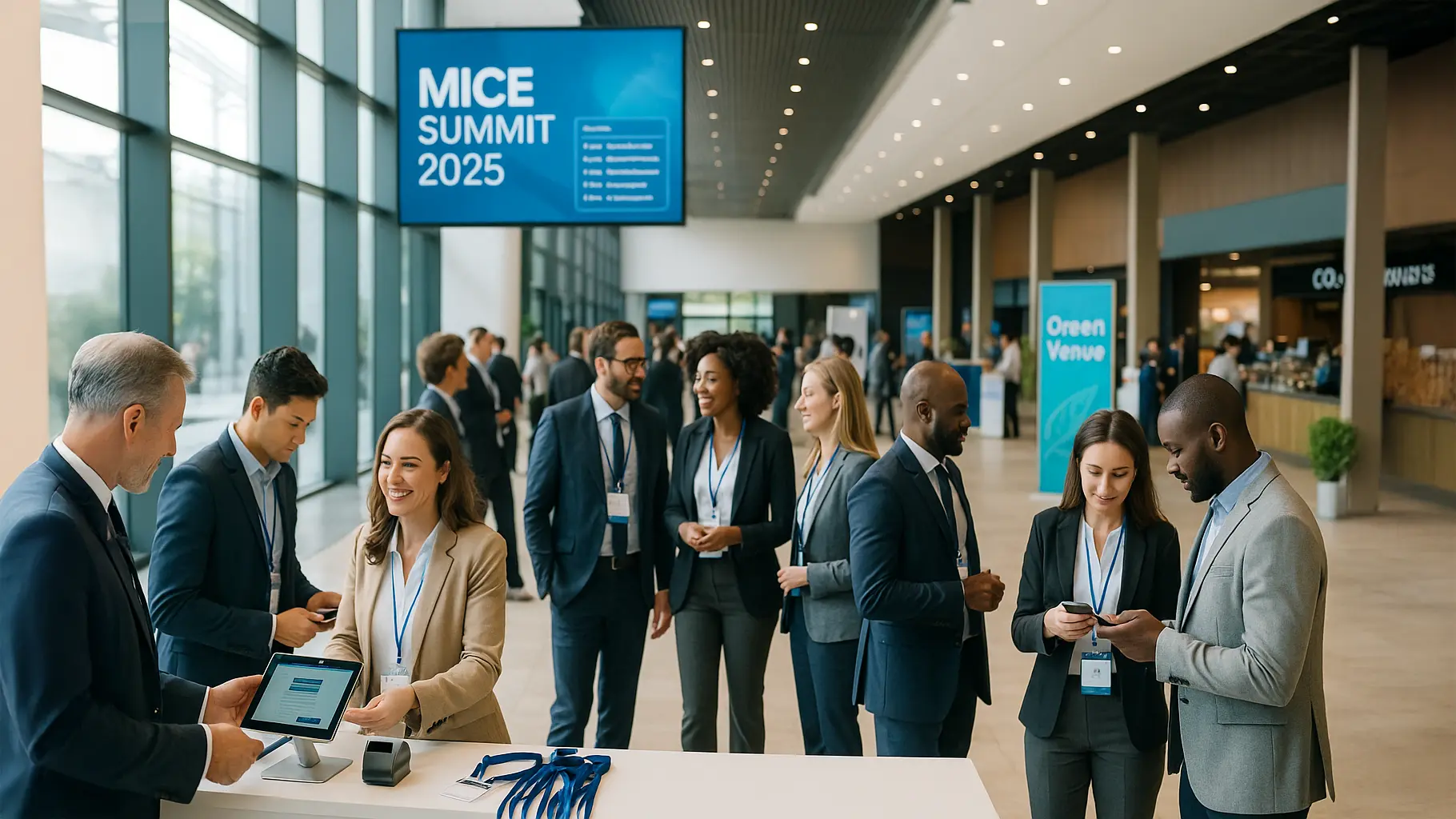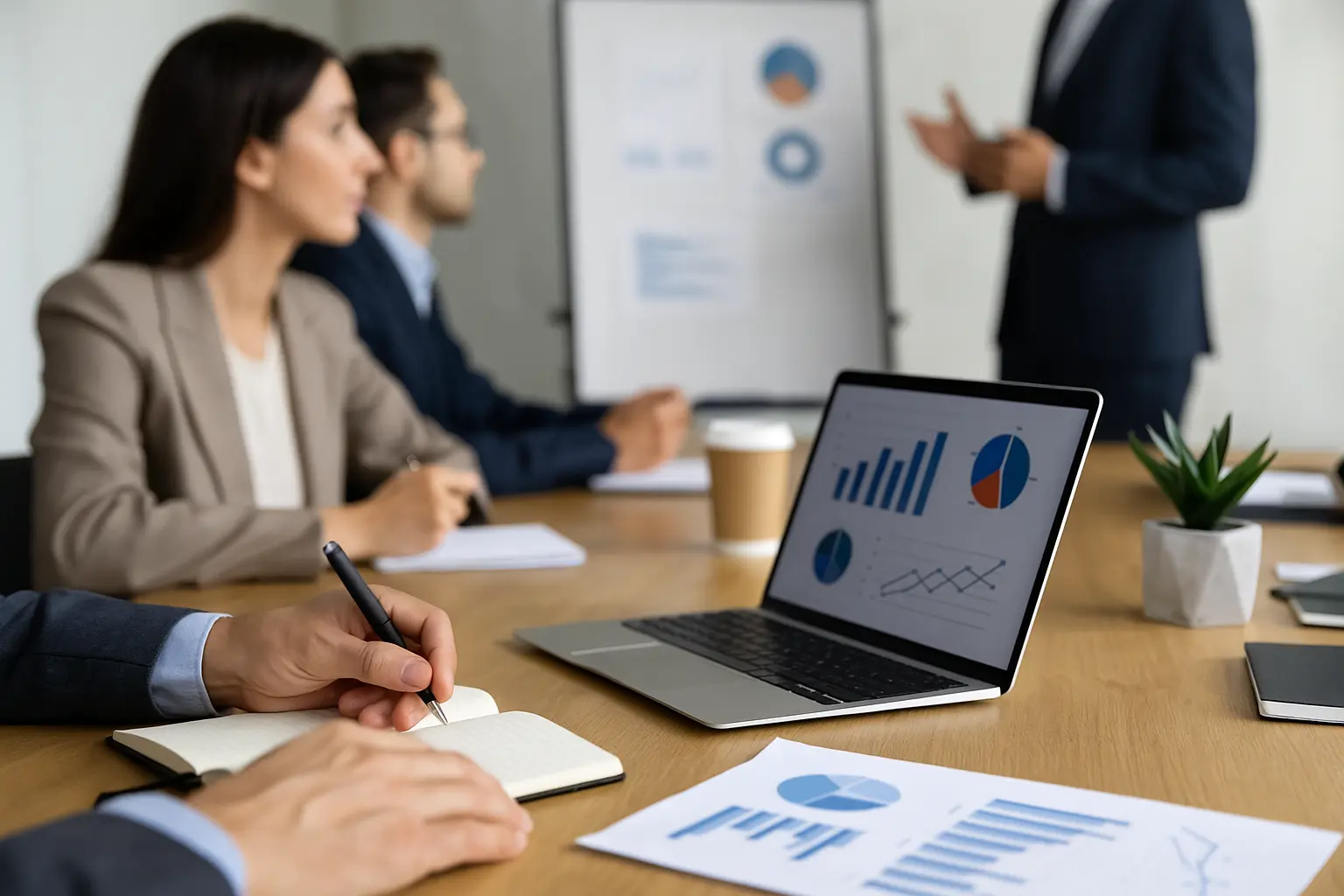MICE – short for Meetings, Incentives, Conferences & Exhibitions – describes the professional part of the business and event industry. For companies, MICE formats are not an end in themselves: when planned correctly, they increase pipeline, knowledge transfer, employee motivation and brand impact. This guide shows you how to think strategically about MICE, leverage 2025 trends and deliver the KPIs that count in reporting.
What does MICE mean – and why is it special?
MICE combines four building blocks that together form a powerful ecosystem:
Meetings accelerate decision-making and collaboration – from workshops to multi-day offsites. Incentives focus on experience-oriented recognition and strengthen loyalty among employees or partners. Conferences focus on knowledge transfer and thought leadership, often with keynotes, breakouts and accompanying expos. Exhibitions – i.e. trade fairs and trade shows – provide the stage for product demos, qualified discussions and measurable lead generation.
The strategic value arises because MICE bundles channels that generate qualified contacts, enable one-to-one meetings and can be tracked right through to pipeline attribution. Those who understand this connection do not plan ‘an event’, but rather a process – from awareness to on-site experience to follow-up.
MICE vs. Leisure: where the boundaries lie
While leisure focuses primarily on relaxation and experience, MICE follows a ROI logic. Budgets are measured in terms of leads, closing opportunities, knowledge goals or employee retention. Accordingly, RFPs, contract and compliance frameworks, sponsorship and a robust set of key performance indicators are standard. This governance explains why planning depth, stakeholder setup and reporting are far more important in the MICE context than in the leisure sector.
The four building blocks in detail – with practical relevance
Meetings
Whether it’s a leadership offsite, product workshop or sales training session, meetings work when the objectives and agenda are clear, strong moderation provides guidance and results are documented. Collaboration tools and binding follow-ups ensure implementation in everyday life.
Incentives
Incentives are effective when they combine storytelling, recognition and inclusivity. A curated supporting programme – from local experiences to team challenges – turns a trip into an employer branding lever. Sustainable standards (e.g. public transport, reusable items, vegan options) increase acceptance and credibility.
Conferences
Customer and industry conferences require programme design that clearly guides personas: keynotes convey direction, breakouts provide depth, hands-on sessions activate. At the same time, networking formats – from curated round tables to hosted buyer programmes – ensure buyer-seller matches with substance.
Exhibitions
Trade fairs provide a visible deal pipeline – provided that the stand story, demo timing and lead capture are all coordinated. Qualification questions at the scanner, fixed appointment slots for one-to-one meetings and a coordinated run of show keep marketing, sales and partners on track.
The MICE blueprint: how professionals plan
It all starts with goals and KPIs – e.g. registrations, qualified leads, 1:1 meetings, pipeline value or NPS. Based on this, the stakeholder setup (marketing, sales, HR, compliance, procurement, IT, venue/agency) is created with clear roles and decision-making processes. When it comes to the budget, professionals think in terms of impact blocks: venue & AV/technology, event tech, catering, speakers, travel and CO₂ measures.
Supplier selection via RFP prioritises capacity, logistics, accessibility and sustainability. At the same time, tracks, formats and sponsorship packages are curated, while the participant journey – from registration to hotel allotments, badges and check-in to matchmaking and on-site communication – is planned in detail. The event tech stack links the agenda, app, live interaction, lead scanning and analytics; risk and data protection concepts as well as clean measurement close the circle and support the ROI story in CRM.
Event technology that really works
A modern event app combines agenda, personalisation and in-app communication in a single interface. Networking and matchmaking deliver qualified encounters, while integrated lead management brings together scans, notes and CRM sync. Hybrid and on-demand modules increase reach and extend learning curves. Measurability is crucial: from session participation and heat maps to sponsor reports, the figures that budget decision-makers expect are available.

Requirements for an event platform
Find out what requirements an event platform needs to make your event a complete success in the future.
Choosing the right destination and location
The choice of destination and venue determines the experience, costs and sustainability. Check accessibility (direct flights/ICE), capacity for plenary sessions and breakouts, available hotel rooms, exhibition space, 5G/Wi-Fi, security situation and sustainability standards (e.g. public transport connections, certifications). Convention centres offer scalability and professional AV infrastructure, but are often tied to specific partners. Congress hotels score points with short distances and package prices, but reach their limits when it comes to expo size. Special venues stage brands in an exciting way, but require precise logistics. Campus/corporate locations ensure control and familiarity, but some have restricted access. The best location is the one that supports the target group, story and programme flow – not the largest hall.
Budget, sponsorship and monetisation
A sustainable cost model distributes funds across venue, AV/media, catering, personnel, tech, travel and CO₂. On the revenue side are tickets, sponsorship, expo space, hosted buyer programmes and content licences. Smart sponsorship packages combine branding, lead generation, speaking slots, VIP formats and data reports so that partners can reliably demonstrate their ROI. Transparent service descriptions and reporting simplify renewal for the following year.
Sustainability in MICE – pragmatic and measurable
Effective sustainability is achieved through sustainable defaults: certified venues (e.g. ISO 20121), regional supply chains, reusable items and public transport options. Digital-first reduces material use; reusable exhibition components avoid waste. KPIs such as CO₂ per participant, waste rate and local value creation are crucial – this is the only way to make sustainability comparable and controllable.
KPIs & reporting: what C-level executives want to see
Marketing looks at registrations, qualified leads and content reach. Sales evaluates one-to-one meetings, opportunities, pipeline value and win rate. HR monitors participation rates, engagement and retention indicators. At the programme level, utilisation, NPS/CSAT and speaker ratings are important; sponsors expect scan quality and transparent partner reports. A consistent dashboard makes results comparable and speeds up budget approval for the following year.
Trends for 2025 in the MICE industry
Experience design focuses on curated micro-experiences and community building rather than purely stage-based formats. AI and automation improve session suggestions, meeting matching and auto-summaries. Budget pressures (especially AV and hotels) make hybrid and on-demand formats key drivers of reach. Duty of care strengthens safety and crisis communication plans. Hosted buyer programmes are data-driven and guarantee qualified meetings. Those who link these trends to their own goals increase their impact with the same budgets.
Mini playbooks for typical goals
Pipeline & Sales
Define ICP target groups early on, allocate appointment slots before the event, and tell a clear story at your stand using demos, use cases, and social proof. A follow-up within 48 hours with personalised next steps maintains momentum and increases the chances of closing a deal.
Employee retention
Showcase recognition (e.g. awards), combine learning paths with peer sessions and integrate wellbeing elements. Pre-/post-event challenges activate the community and prolong the effect.
Leadership di pensiero
A curated programme with diverse voices and hands-on formats builds credibility. Owned media – livestream plus on-demand library – extends reach. Partners can be meaningfully integrated via co-sessions and data packages.
Conclusion
MICE is most effective when you understand it as an end-to-end process: from target group-specific awareness to frictionless registration and an engaging on-site experience to measurable ROI in CRM. The four building blocks – meetings, incentives, conferences and exhibitions – each contribute to different goals, but only unfold their full effect when they work together. The key factors are programme design, governance and compliance, sustainable defaults, and a consistent event tech stack that seamlessly combines interaction, networking, and analytics.
Setting up MICE in this way increases pipeline speed, knowledge diffusion and employee retention, while budgets remain controllable via robust KPIs. Instead of reinventing the wheel every time, it is worth setting up a reusable system with clear roles, templates and integrations – this way, events become predictable growth drivers rather than one-off measures.
Frequently asked questions (FAQ)
What is MICE?
MICE stands for Meetings, Incentives, Conferences & Exhibitions – the professional segment of business events with clear corporate objectives.
Is MICE the same as the ‘meetings industry’?
In everyday life, MICE is often equated with the meetings and events industry. Many organisations prefer this more neutral umbrella term.
Which KPIs are important?
Leads, one-to-one meetings, pipeline value, NPS/CSAT, sponsorship ROI and content reach.
What trends will shape the industry in 2025?
Experience Design, AI & Automation, Sustainability, Budgetdruck und Duty of Care.
What role does technology play?
From registration to event apps to analytics: technology drives personalisation, efficiency and measurability.



